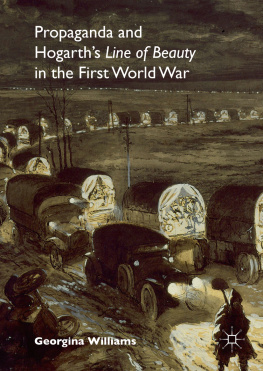
A rabbi, a priest, a politician, public servants, a military officer, a student activist and a social media consultant are interviewed in this book to discuss Israels faltering public image.
Rabbi Berl Wine addresses the Jewish diaspora tradition and the lack of religious understanding of the realities of running a sovereign modern state. Pastor Jrgen Bhler discusses the Christian Protestant pro-Israel perspective. Dr. Meron Medzini, the biographer of Golda Meir, sets out the states early policy toward propaganda. Dr. Moshe Yegar, a former deputy director in the Israeli foreign ministry, discusses the time when hasbara (pro-Israel advocacy) was abolished in the ministry by Shimon Peres. Danny Seman, formerly a head of department in the newly founded Ministry of Information and Government Press Office, tells of his experiences of working for the government without the necessary support. Barak Raz of the IDF Spokesman Unit gives the military angle. Yigal Palmor, a former spokesman for the Foreign Ministry, sets out Israeli foreign policy objectives. Yossi Sarid, former senior minister and media personality, provides analysis of hasbara in an international perspective. David Olesker, a leading authority on global campus activism, gives a historical survey of anti-Israel campus activities. Eva Rosenstein and David Abitbol discuss professional media and social media perspectives of pro-Israel advocacy. Ron Schleifer and Jessica Snapper set out to rectify Israels international image, through better understanding of historical and contemporary public relations policy, and the political/religious/military philosophy behind different approaches, presenting media and psychological mechanisms of motivating a more resourceful approach to Israeli statehood.
Dr. Ron Schleifer is a senior lecturer at Ariel University, Israel. His most recent book, Perspectives of Psychological Operations (PSYOP) in Contemporary Conflicts, was recently reprinted in paperback (A thoughtful book, Recommended. Choice).
Jessica Snapper is a security analyst specializing in asymmetric warfare and national security policy. She has conducted research for the Israel Defense Forces, University of Pittsburgh and the Hebrew University of Jerusalem.
Copyright Ron Schleifer and Jessica Snapper 2015.
Published in the Sussex Academic e-Library, 2015.
SUSSEX ACADEMIC PRESS
PO Box 139
Eastbourne BN24 9BP, UK
and simultaneously in the United States of America and Canada
All rights reserved. Except for the quotation of short passages for the purposes of criticism and review, no part of this publication may be reproduced, stored in a retrieval system or transmitted in any form or by any means, electronic, mechanical, photocopying, recording or otherwise, without the prior permission of the publisher.
British Library Cataloguing in Publication Data
A CIP catalogue record for this book is available from the British Library.
Library of Congress Cataloging-in-Publication Data
Applied for.
ISBN 978-1-78284-160-9 (e-pub)
ISBN 978-1-78284-161-6 (e-mobi)
ISBN 978-1-78284-162-3 (e-pdf)
This e-book text has been prepared for electronic viewing. Some features, including tables and figures, might not display as in the print version, due to electronic conversion limitations and/or copyright strictures.
Acknowledgments
What started as a small project (interviewing a dozen people on hasbara) turned out to be a complicated project spanning two years, a large number of interviewees and a similar number of production and editorial workers. We owe much thanks to the many people who helped materialize a mere idea into a (hopefully) thought-provoking book. To Josef for financing, to Mina for transcribing, to Renee for editing, to Chaya for proofreading, to Professor David Wolf, head of Ariel University R&D, for funding, and to the staff of Sussex Academic for their careful guidance at all stages of the books preparation.
R ON S CHLEIFER and J ESSICA S NAPPER
This book would have not seen the light of day without the diligence of Jessica Snapper, co-author, in arranging, conducting and editing the interviews. Finally, on a personal note, I extend my full thanks to my family for their continued support.
R ON S CHLEIFER
Jerusalem, Erev Rosh Hashana
September 2014
Introduction
Based on three decades of research and exposure to Israels image abroad, I can fairly say that the only issue that Israelis and Jews worldwide agree on, without exception, is the bad state of Israels public image. From here on, the differing political, social, and cultural elements begin to play out, disagreeing with each other as to why Israels public image is as bad as it is.
Israel puts dismal efforts into advocacy and, it would seem, has little interest in improving in this area. This book sets out to discover why. Israels image has been the subject of many media reports, state comptroller reports, and journalistic documentaries, yet very few analytical works. The best book on the subject was written thirty years ago, in Hebrew: a small volume by the former deputy head of the Israeli Foreign Ministry on hasbara matters, Dr Moshe Yegar, who is one of the contributors to this study. Overall, however, there still exists a vast amount about this topic waiting to be researched. Although Israel and its conflicts have been examined under many lenses historic, economic, strategic, and within the context of the greater Middle East there is very little extant literature on its propaganda or, as Israelis call it, hasbara (literally, explaining). Neither the reasons for Israels disengagement from proactive campaigning, nor the effects this disengagement has had on the efficacy of its foreign diplomacy, have been studied. From my experience, I believe that unearthing the root of this issue and beginning to examine some of the ways in which it may be mitigated, will be the key to Israels continued existence.
In contrast, both Arabs and Palestinian-Arabs have long realized the importance of constructing a national image to serve their political goals. They began consciously using multiple campaigns as early as the 1950s, such as the Arab League economic boycott, which met with moderate success. However, the years following the First Lebanon War of 1982 have seen some of their strongest efforts in this area. One classical and extremely effective persuasion tool, used at the start of the Second Intifada in September 2000, was the Muhammad al-Durrah incident: twelve-year-old al-Durrah was filmed being shot by Israeli army cross-fire in the Gaza Strip and dying in his fathers arms. Although the video was later discovered to be a likely hoax, it was an extremely effective persuasion tool. The boy became a martyr, a symbol of the Palestinian position to the Palestinians and the world. Following the incident, it became easier to recruit candidates for suicide terror attacks; streets were named after al-Durrah in several Arab countries and, in their prerecorded video messages, suicide bombers declared that they were committing terrorism to avenge the boy. The incident may also have sparked the lynching of two Israeli soldiers in Ramallah, in October of that year, and the beheading of Jewish journalist Daniel Pearl in Afghanistan in 2002.
With hindsight, the Palestinian capability to keep their cause high in the worlds attention for over four decades is admirable, to say the least. Through a constant effort combining political warfare, lobbying, Low Intensity Conflict (LIC), terrorism, and subversion although often yanking the chain too strongly and arousing a strong Israeli response the Palestinians under Yasser Arafat managed to attract the worlds sympathy to their cause, reverse their brute-force image to that of an underdog, and inflict political, social, and financial damage on Israel. The overall theoretical strategy that incorporates all the above-mentioned tactics is called Strategic-level Psychological Warfare.










